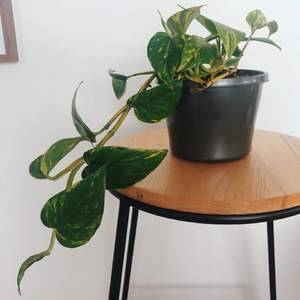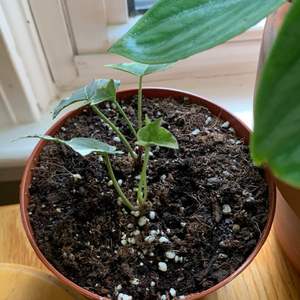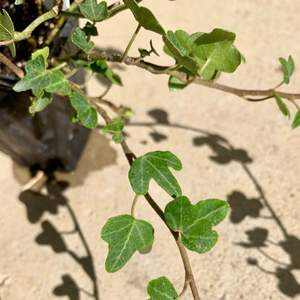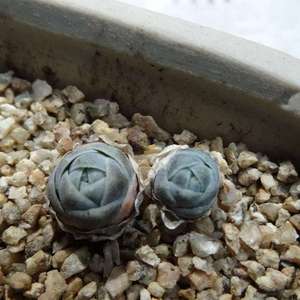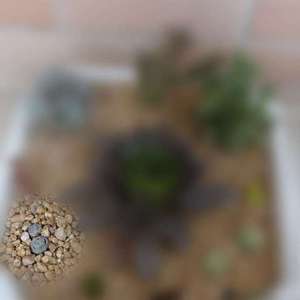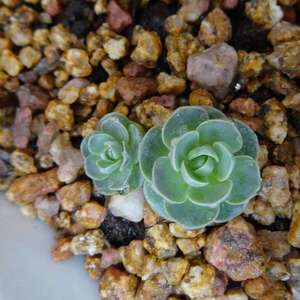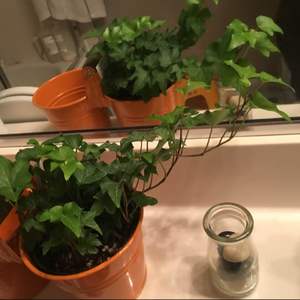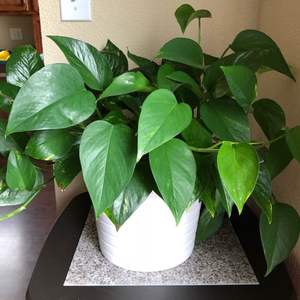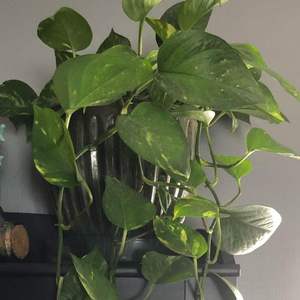文章
Miss Chen
2022年05月09日

English ivy (Hedera helix) is an evergreen perennial. It is also classified as a woody vine. English ivy can act as a ground cover, spreading horizontally. But it is also a climber, due to its aerial rootlets, which allows it to climb to 80 feet high.
he plant will eventually bear insignificant greenish flowers, but it is grown primarily for its evergreen leaves. In this regard, ivy can be classified as a foliage plant. The best time to plant English ivy is spring. It is a fast, aggressive grower that is considered invasive in many areas. Keep a watchful eye on children and pets because English ivy is toxic to humans and animals.1
Common Name English ivy, common ivy, European ivy
Botanical Name Hedera helix
Family Araliaceae
Plant Type Perennial, evergreen climbing vine
Mature Size N/A; climbs and spreads as much as possible
Sun Exposure Part shade to full shade
Soil Type Fertile and moist
Soil pH Neutral to slightly alkaline
Bloom Time Fall
Flower Color Greenish-white, greenish-yellow
Hardiness Zones 4-13 (USDA)
Native Area Europe, Scandinavia, Russia
Toxicity Toxic to people and pets
English Ivy Care
To the ancient Greeks and Romans, glossy-leafed, dark green ivy was sacred to the god Dionysus (Bacchus in Rome), and the pagan druids reflected on ivy in the Christmas carol, "The Holly and the Ivy," where the plant represents female divinity. This plant continued to impact ancient cultures as its evergreen vines physically covered vast areas of Europe without much intervention.

The fact that English ivy plants spread quickly means that they can be useful as ground cover for filling in hard-to-plant spots in your landscaping. Their aggressive nature suggests that they could be effective allies against erosion on hillsides. At home indoors or out, English ivy does well planted in containers or baskets where its trailing vines can hang down. Ivy needs protection from winter winds as well as the hot summer sun, so plant appropriately.
English ivy is considered invasive in many areas, including the Pacific Northwest, California, several Southeast states, and parts of the Midwest. Before planting English ivy, consult a local extension office to confirm that it is not considered an invasive species in your area. English ivy is also widely known to be capable of causing damage to trees and brickwork.
Light
English ivy plants grow well in part shade to full shade. The ability to grow in shade has made English ivy a traditional ground cover for planting under trees, where most grasses may not grow well. Since ivy is vigorous and has a dense growth habit, it's an effective ground cover if your objective is to crowd out weeds.
Ivy grown indoors needs bright, indirect light in summer but can benefit from some direct light in winter.
Soil
Grow this evergreen vine in well-drained soil. Although it will grow in poor soils and soils of a wide range of pH levels, it does best in average loams. A thick layer of mulch helps keep the soil moist in dry climates.
Indoors, ivy does best in potting mix that is loose and well-drained.

Water
When watering your ivy, always check the soil before adding water. Ivy prefers to be kept slightly on the dry side, so let the soil dry out some (dry to the touch on top) before you water your ivy plants again. Indoor or outdoor ivy prefers evenly moist but not soggy soil. Also, make sure that your plant has excellent drainage. Ivy should not be kept in standing water or overly wet soil.
Temperature and Humidity
English Ivy plants grow best in temperatures between 70 and 90 degrees Fahrenheit. Their leaves will stay dark green when grown in steady temperatures and medium to high humidity. It does not like cold winter wind or high summer heat.
In some areas and with some species of ivy, it's possible to keep potted plants outdoors in winter, and new growth emerges from the stems in spring.
Fertilizer
Feed English ivy every two weeks during the spring and summer season, using a 20-20-20 fertilizer (or a 2-2-2 organic formula). Do not use fertilizer or plant food if the plant is in a stressful situation: very hot, very cold, or very dry soil, or when leaf production has stopped.
Pruning
Use clean and sharp cutting shears to trim ground cover plants in the spring to keep them manageable and discourage bacterial leaf spot. Prune any ivy into a bushy shape by pinching off its growing tips, also in spring. A hard pruning every few years helps revitalize the plant.
If English ivy is already climbing one of your trees, be careful if you wish to remove it. Do not just rip a vine off, which could hurt the tree's bark. Instead, cut each vine where you find it coming out of the soil at the base of the tree, where it begins its ascent. When cut off from the earth (and thus from a water source), the part of the vine left anchored in the tree bark will eventually wither and die.
This removal technique is the best way to get rid of the plant organically, but it does require some patience. You will need to go back year after year and cut new growth until all strength has been sapped out of the plant. It is only at this point that new shoots will stop emerging every spring.
Propagating English Ivy
The same trimmings or stem cuttings that you take from pruning your ivy can be used to propagate new plants taking these easy steps:
Use healthy stems that are 4 to 5 inches long. Submerge the cut ends in water and wait for roots to develop.
Transfer the stems to a pot or the ground. Plants grown as ground cover naturally spread when stems contact the soil and take root; you can cut rooted stems and dig them up to move them to a pot or a different garden location.
Potting and Repotting English Ivy
Some gardeners grow these plants in hanging baskets, letting them cascade over the sides. Indeed, considering their invasive quality, this is a very sensible way to grow the vines for their beauty without having to worry that they will spread out of control.
Small ivy plants can be repotted once a year, while larger plants can be repotted every two years. Always repot with new potting soil to ensure adequate nutrition. Older plants that can use a boost often can be revived by simply replacing the soil in the same container.
Common Pests & Plant Diseases
English ivy may become host to aphids, spider mites, mealybugs, and other pests, which can usually be sprayed off with water and can be controlled with neem oil or insecticidal soap.1 One homemade remedy for aphids is to spray the foliage with a mixture of dish soap and water.
Diseases that affect ivy include bacterial leaf spot and root rot.3 Leaf spot appears as black or dark brown spotting on the plant foliage. Unfortunately, the best remedy is to remove the affected plants. Help protect any remaining plants by spraying them with a 10-to-1 mixture of water to vinegar.
Root rot is typically caused by warm and humid weather and can be fatal to affected plants. Again, removal is the best remedy. Unaffected remaining plants can be treated with fungicide for protection.
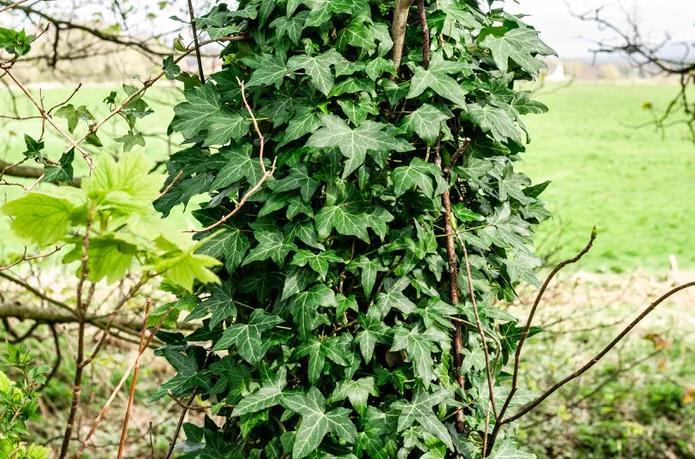
FAQ
Is English ivy easy to care for?
Outdoors, English ivy needs little to no care for it to thrive. Indoors, you'll need to pay a bit more attention to the plant.
How fast does English ivy grow?
Since English ivy is aggressive, it can grow rapidly. It establishes quickly outdoors (within months). English ivy grows slower indoors and can take at least a year to establish itself before it has a growth spurt.
Can English ivy grow indoors?
English ivy can be grown indoors, where it thrives with relatively cool nights and frequent misting to maintain humidity. However, it is generally considered to be a finicky houseplant, despite its being a common offering at garden centers.
he plant will eventually bear insignificant greenish flowers, but it is grown primarily for its evergreen leaves. In this regard, ivy can be classified as a foliage plant. The best time to plant English ivy is spring. It is a fast, aggressive grower that is considered invasive in many areas. Keep a watchful eye on children and pets because English ivy is toxic to humans and animals.1
Common Name English ivy, common ivy, European ivy
Botanical Name Hedera helix
Family Araliaceae
Plant Type Perennial, evergreen climbing vine
Mature Size N/A; climbs and spreads as much as possible
Sun Exposure Part shade to full shade
Soil Type Fertile and moist
Soil pH Neutral to slightly alkaline
Bloom Time Fall
Flower Color Greenish-white, greenish-yellow
Hardiness Zones 4-13 (USDA)
Native Area Europe, Scandinavia, Russia
Toxicity Toxic to people and pets
English Ivy Care
To the ancient Greeks and Romans, glossy-leafed, dark green ivy was sacred to the god Dionysus (Bacchus in Rome), and the pagan druids reflected on ivy in the Christmas carol, "The Holly and the Ivy," where the plant represents female divinity. This plant continued to impact ancient cultures as its evergreen vines physically covered vast areas of Europe without much intervention.

The fact that English ivy plants spread quickly means that they can be useful as ground cover for filling in hard-to-plant spots in your landscaping. Their aggressive nature suggests that they could be effective allies against erosion on hillsides. At home indoors or out, English ivy does well planted in containers or baskets where its trailing vines can hang down. Ivy needs protection from winter winds as well as the hot summer sun, so plant appropriately.
English ivy is considered invasive in many areas, including the Pacific Northwest, California, several Southeast states, and parts of the Midwest. Before planting English ivy, consult a local extension office to confirm that it is not considered an invasive species in your area. English ivy is also widely known to be capable of causing damage to trees and brickwork.
Light
English ivy plants grow well in part shade to full shade. The ability to grow in shade has made English ivy a traditional ground cover for planting under trees, where most grasses may not grow well. Since ivy is vigorous and has a dense growth habit, it's an effective ground cover if your objective is to crowd out weeds.
Ivy grown indoors needs bright, indirect light in summer but can benefit from some direct light in winter.
Soil
Grow this evergreen vine in well-drained soil. Although it will grow in poor soils and soils of a wide range of pH levels, it does best in average loams. A thick layer of mulch helps keep the soil moist in dry climates.
Indoors, ivy does best in potting mix that is loose and well-drained.

Water
When watering your ivy, always check the soil before adding water. Ivy prefers to be kept slightly on the dry side, so let the soil dry out some (dry to the touch on top) before you water your ivy plants again. Indoor or outdoor ivy prefers evenly moist but not soggy soil. Also, make sure that your plant has excellent drainage. Ivy should not be kept in standing water or overly wet soil.
Temperature and Humidity
English Ivy plants grow best in temperatures between 70 and 90 degrees Fahrenheit. Their leaves will stay dark green when grown in steady temperatures and medium to high humidity. It does not like cold winter wind or high summer heat.
In some areas and with some species of ivy, it's possible to keep potted plants outdoors in winter, and new growth emerges from the stems in spring.
Fertilizer
Feed English ivy every two weeks during the spring and summer season, using a 20-20-20 fertilizer (or a 2-2-2 organic formula). Do not use fertilizer or plant food if the plant is in a stressful situation: very hot, very cold, or very dry soil, or when leaf production has stopped.
Pruning
Use clean and sharp cutting shears to trim ground cover plants in the spring to keep them manageable and discourage bacterial leaf spot. Prune any ivy into a bushy shape by pinching off its growing tips, also in spring. A hard pruning every few years helps revitalize the plant.
If English ivy is already climbing one of your trees, be careful if you wish to remove it. Do not just rip a vine off, which could hurt the tree's bark. Instead, cut each vine where you find it coming out of the soil at the base of the tree, where it begins its ascent. When cut off from the earth (and thus from a water source), the part of the vine left anchored in the tree bark will eventually wither and die.
This removal technique is the best way to get rid of the plant organically, but it does require some patience. You will need to go back year after year and cut new growth until all strength has been sapped out of the plant. It is only at this point that new shoots will stop emerging every spring.
Propagating English Ivy
The same trimmings or stem cuttings that you take from pruning your ivy can be used to propagate new plants taking these easy steps:
Use healthy stems that are 4 to 5 inches long. Submerge the cut ends in water and wait for roots to develop.
Transfer the stems to a pot or the ground. Plants grown as ground cover naturally spread when stems contact the soil and take root; you can cut rooted stems and dig them up to move them to a pot or a different garden location.
Potting and Repotting English Ivy
Some gardeners grow these plants in hanging baskets, letting them cascade over the sides. Indeed, considering their invasive quality, this is a very sensible way to grow the vines for their beauty without having to worry that they will spread out of control.
Small ivy plants can be repotted once a year, while larger plants can be repotted every two years. Always repot with new potting soil to ensure adequate nutrition. Older plants that can use a boost often can be revived by simply replacing the soil in the same container.
Common Pests & Plant Diseases
English ivy may become host to aphids, spider mites, mealybugs, and other pests, which can usually be sprayed off with water and can be controlled with neem oil or insecticidal soap.1 One homemade remedy for aphids is to spray the foliage with a mixture of dish soap and water.
Diseases that affect ivy include bacterial leaf spot and root rot.3 Leaf spot appears as black or dark brown spotting on the plant foliage. Unfortunately, the best remedy is to remove the affected plants. Help protect any remaining plants by spraying them with a 10-to-1 mixture of water to vinegar.
Root rot is typically caused by warm and humid weather and can be fatal to affected plants. Again, removal is the best remedy. Unaffected remaining plants can be treated with fungicide for protection.

FAQ
Is English ivy easy to care for?
Outdoors, English ivy needs little to no care for it to thrive. Indoors, you'll need to pay a bit more attention to the plant.
How fast does English ivy grow?
Since English ivy is aggressive, it can grow rapidly. It establishes quickly outdoors (within months). English ivy grows slower indoors and can take at least a year to establish itself before it has a growth spurt.
Can English ivy grow indoors?
English ivy can be grown indoors, where it thrives with relatively cool nights and frequent misting to maintain humidity. However, it is generally considered to be a finicky houseplant, despite its being a common offering at garden centers.
0
0



